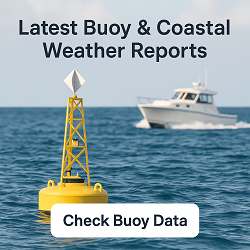Wichita Falls, TX Weather Forecast and Current Conditions
Current Conditions From Nearby Local Station

Feels Like 37°F
at
Point Forecast at a Glance







7-Day Temperature Trend
Week Ahead Summary
High temperatures climb from 41°F to a high of 71°F by week's end. Dry weather expected throughout the week.
Climate Context
This week's forecast shows temperatures running 10°F above the historical average for December. Normal highs for this period are around 55°F with lows around 31°F.
This Date in Weather History
1987 - A major winter storm produced high winds and heavy snow in the Southern Rockies and the Southern High Plains. Snowfall totals in New Mexico ranged up to 25 inches at Cedar Crest, with up to three feet of snow reported in the higher elevations. Winds of 75 mph, with gusts to 124 mph, were reported northeast of Albuquerque NM. El Paso TX was buried under 22.4 inches of snow, including a single storm record of 16.8 inches in 24 hours. The snowfall total surpassed their previous record for an entire winter season of 18.4 inches. Record cold was experienced the next three nights as readings dipped into the single numbers. High winds ushering unseasonably cold air into the southwestern U.S. gusted to 100 mph at Grapevine CA.
Wichita Falls, TX 7 Day Weather Forecast Details
Saturday Dec 13

Night: Partly cloudy, with a low around 25. North northeast wind 16 to 20 mph, with gusts as high as 30 mph.
Sunday Dec 14

Day: Sunny, with a high near 41. North wind 6 to 13 mph, with gusts as high as 20 mph.

Night: Mostly clear, with a low around 26. Light and variable wind becoming south around 6 mph after midnight.
Monday Dec 15

Day: Mostly sunny, with a high near 58. South wind 6 to 13 mph, with gusts as high as 20 mph.

Night: Mostly cloudy, with a low around 42. South wind 8 to 10 mph.
Tuesday Dec 16

Day: Mostly sunny, with a high near 69.

Night: Mostly clear, with a low around 43.
Wednesday Dec 17

Day: Sunny, with a high near 71.

Night: Mostly clear, with a low around 51.
Thursday Dec 18

Day: Sunny, with a high near 67.

Night: Mostly clear, with a low around 37.
Friday Dec 19

Day: Sunny, with a high near 68.

Night: Clear, with a low around 52.
Saturday Dec 20

Day: Sunny, with a high near 78.
About Wichita Falls, TX
Content from Wikipedia, licensed under CC BY-SA 3.0.
How We Provide Better Local Weather
Current conditions: We use the nearest available station to your location - including professional MESONET/MADIS and local weather stations - often miles closer than regional airports.
Forecasts: National Weather Service point forecasts predict for your specific area, not broad regional zones, making them far more relevant to your location.



